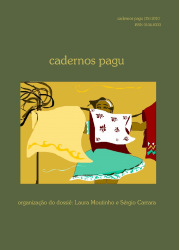Resumo
A antropologia e a teoria feminista têm como espaço privilegiado de reflexão a intersecção gênero, violência e subjetividade. Algumas abordagens nessa intersecção acabam por pensar violência como algo apenas eventual, olvidando-se frequentemente de assinalar suas íntimas conexões com o cotidiano. É comum também, e consubstancial a essa visão de violência como extra-ordinário, pensar o campo que envolve a violência em oposições rígidas, tais como: vítima e agressor, agência e opressão – existindo mesmo uma habitual associação entre agência e transgressão, como se a voz das vítimas só pudesse se manifestar transgredindo e enfrentado a Lei. Dessa maneira, como algo esporádico e fortuito, que se irrompe aqui ou acolá, a violência não desce ao cotidiano, e o trabalho diário na lida contra a violência é obnubilado em favor de certo tipo de violência acidental e de certo tipo heróico de resistência. É à busca de pensar as relações entre gênero, violência e subjetividade para além da oposição ordinário e extra-ordinário, evitando as ciladas dessa oposição, que a antropóloga indiana Veena Das vem se dedicando na última década e, como fruto dessa inquietação, publicou o livro Life and Words: Violence and the Descent into the Ordinary.Referências
BUTLER, Judith. The psychic life of power: theories in subjection.
California, Stanford University Press, 1997.
__________. Gender Trouble: Feminism and the Subversion of Identity.
New York, Routledge, 1990.
CAVELL, Stanley. Foreword. In: DAS, Veena. Life and Words. Violence and the descent into the ordinary. Berkeley, University of California Press, 2007, pp.ix-xiv.
DAS, Veena. Listening to Voices. An interview with Veena Das. (interview by DIFRUSCIA, Kim Turcot). Alterités, vol. 7, nº 1, 2010, pp.136-145.
__________. Life and Words. Violence and the descent into the ordinary.
Berkeley, University of California Press, 2007.
__________. Sexual violence, discursive formations and the state. In: CORONIL, F. e SKURSKI, J. (eds.) States of Violence. Michigan, Univ.
Mich. Press, 2005, pp.323-425.
__________. Trauma and testimony. Implications for political community.
Anthropological Theory, vol. 3, nº 3, 2003, pp.293-307.
__________. Wittgenstein and anthropology. Annual Review of Anthropology, vol. 27, 1998, pp.171-195.
__________. Critical events. An anthropological perspective on contemporary India. Delhi, Oxford University Press. 1995.
__________. Our Work to Cry: Your Work to Listen. In: DAS, Veena.
(ed.) Mirrors of Violence: Communities, Riots and Survivors in South Asia. Delhi, Oxford University Press, 1990, pp.345-99.
__________ e POOLE, Deborah. (eds.) Anthropology in the margins of the State. New Delhi, Oxford University Press. 2004.
GOLDMAN, Márcio. Objetificação e subjetificação no último Foucault. In: Alguma Antropologia. Relume Dumará, Rio de Janeiro, pp.65-76.
MALINOWSKI, Bronislaw. Coral Gardens and Their Magic: a Study of the Methods of Tilling the Soiland of Agricultural Rites in the Trobriand Islands. New York, American Book, 1935.
MARTIN, Emily. Violence, language and everyday life. American ethnologist, vol. 34, nº 4, pp.741-745.
PEIRANO, Mariza. Onde está a antropologia. Mana, vol. 3, nº 2, 1997, pp.67-102.

